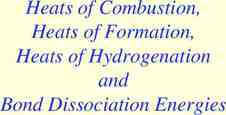Hess’s Law Learning goal: I will learn that I can determine the
35 Slides1.51 MB
Hess’s Law Learning goal: I will learn that I can determine the enthalpy of a reaction without doing a lab.
Hess’s Law Hess’s law of heat summation states that for a chemical equation that can be written as the sum of two or more steps, the enthalpy change for the overall equation is the sum of the enthalpy changes for the individual steps.
A B C B C D A D H x H y H ? H x y
Figure 6.7: Campsite to illustrate altitude.
Figure 6.13: Enthalpy diagram illustrating Hess’s law.
Hess’s Law For example, suppose you are given the following data: o S(s ) O 2 (g ) SO 2 (g ); H -297 kJ o 2SO 3 (g ) 2SO 2 (g ) O 2 (g ); H 198 kJ Could you use these data to obtain the enthalpy change for the following reaction? 2S(s) 3O 2 (g ) 2SO 3 (g ); H o ?
Hess’s Law If we multiply the first equation by 2 and reverse the second equation, they will sum together to become the third. o 2S(s ) 2O 2 (g ) 2SO 2 (g ); H (-297 kJ) (2) 2SO 2 (g ) O 2 (g ) 2SO 3 (g ); H o (198 kJ) (-1) o 2S(s) 3O 2 (g ) 2SO 3 (g ); H -792 kJ
Standard Enthalpies of Formation The term standard state refers to the standard thermodynamic conditions chosen for substances when listing or comparing thermodynamic data: 1 atmosphere pressure and the specified temperature (usually 25 oC). – The enthalpy change for a reaction in which reactants are in their standard states is denoted Ho (“delta H zero” or “delta H naught”).
Standard Enthalpies of Formation The standard enthalpy of formation of a substance, denoted Hfo, is the enthalpy change for the formation of one mole of a substance in its standard state from its component elements in their standard state. – Note that the standard enthalpy of formation for a pure element in its standard state is zero.
Standard Enthalpies of Formation The law of summation of heats of formation states that the enthalpy of a reaction is equal to the total formation energy of the products minus that of the reactants. o H o n H f (products) o m H f (reactants) is the mathematical symbol meaning “the sum of”, and m and n are the coefficients of the substances in the chemical equation.
A Problem to Consider Large quantities of ammonia are used to prepare nitric acid according to the following equation: 4NH 3 (g ) 5O 2 (g ) 4NO(g ) 6H 2O(g ) - What is the standard enthalpy change for this reaction? Use Table 6.2 for data.
A Problem to Consider You record the values of Hfo under the formulas in the equation, multiplying them by the coefficients in the equation. 4NH 3 (g ) 5O 2 (g ) 4NO(g ) 6H 2O(g ) 4( 45.9) 5( 0) 4(90.3) 6( 241.8) - You can calculate Ho by subtracting the values for the reactants from the values for the products.
A Problem to Consider Using o H the summation law: o n H f (products) o m H f (reactants) o H [4(90.3) 6( 241.8)] kJ [4( 45.9) 5(0)] kJ o H 906 kJ - Be careful of arithmetic signs as they are a likely source of mistakes.
Fuels A fuel is any substance that is burned to provide heat or other forms of energy. In this section we will look at: - Foods as fuels - Fossil fuels - Coal gasification and liquefaction
Standard Enthalpies of Formation The law of summation of heats of formation states that the enthalpy of a reaction is equal to the total formation energy of the products minus that of the reactants. o H o n H f (products) o m H f (reactants) is the mathematical symbol meaning “the sum of”, and m and n are the coefficients of the substances in the chemical equation.
A Problem to Consider Large quantities of ammonia are used to prepare nitric acid according to the following equation: 4NH 3 (g ) 5O 2 (g ) 4NO(g ) 6H 2O(g ) - What is the standard enthalpy change for this reaction? Use Table 6.2 for data.
A Problem to Consider You record the values of Hfo under the formulas in the equation, multiplying them by the coefficients in the equation. 4NH 3 (g ) 5O 2 (g ) 4NO(g ) 6H 2O(g ) 4( 45.9) 5( 0) 4(90.3) 6( 241.8) - You can calculate Ho by subtracting the values for the reactants from the values for the products.
A Problem to Consider Using o H the summation law: o n H f (products) o m H f (reactants) o H [4(90.3) 6( 241.8)] kJ [4( 45.9) 5(0)] kJ o H 906 kJ - Be careful of arithmetic signs as they are a likely source of mistakes.
How is the heat of sublimation, Hsub, the enthalpy change for the reaction: H2O(s) H2O(g) related to Hfis and Hvap?
Fuels A fuel is any substance that is burned to provide heat or other forms of energy. In this section we will look at: - Foods as fuels - Fossil fuels - Coal gasification and liquefaction
Fuels Food fills three needs of the body: - It supplies substances for the growth and repair of tissue. - It supplies substances for the synthesis of compounds used in the regulation of body processes. - It supplies energy. About 80% of the energy we need is for heat. The rest is used for muscular action and other body processes
Figure 6.15: Sources of energy consumed in the United States (1996).
Fuels A typical carbohydrate food, glucose (C6H12O6) undergoes combustion according to the following equation. C6 H12O 6 (s ) 6O 2 (g ) 6CO 2 (g ) 6H 2O(l ); H o -2803 kJ One gram of glucose yields 15.6 kJ (3.73 kcal) when burned.
Fuels A representative fat is glyceryl trimyristate, C45H86O6. The equation for its combustion is: C45 H 86O 6 (s ) 127 2 O 2 (g ) o 45CO 2 (g ) 43H 2O(l ); H -27,820 kJ One gram of fat yields 38.5 kJ (9.20 kcal) when burned. Note that fat contains more than twice the fuel per gram than carbohydrates contain.
Figure 6.16: The launching of the Columbia space shuttle. Photo courtesy of NASA.
Fuels Fossil fuels account for nearly 90% of the energy usage in the United States. – Anthracite, or hard coal, the oldest variety of coal, contains about 80% carbon. – Bituminous coal, a younger variety of coal, contains 45% to 65% carbon. – Fuel values of coal are measured in BTUs (British Thermal Units). – A typical value for coal is 13,200 BTU/lb. – 1 BTU 1054 kJ
Fuels Natural gas and petroleum account for nearly three-quarters of the fossil fuels consumed per year. – Purified natural gas is primarily methane, CH4, but also contains small quantities of ethane, C2H6, propane, C3H8, and butane, C4H10. – We would expect the fuel value of natural gas to be close to that for the combustion of methane. o CH 4 (g ) 2O 2 (g ) CO 2 (g ) 2H 2O(g ) ; H 802 kJ
Fuels Petroleum is a very complicated mixture of compounds. – Gasoline, obtained from petroleum, contains many different hydrocarbons, one of which is octane, C8H18. C8 H18 (l ) 252 O 2 (g ) o 8CO 2 (g ) 9H 2O(g ); H -5,074 kJ – This value of Ho is equivalent to 44.4 kJ/gram.
Fuels With supplies of petroleum estimated to be 80% depleted by the year 2030, the gasification of coal has become a possible alternative. – First, coal is converted to carbon monoxide using steam. C(s ) H 2O(g ) CO(g ) H 2 (g ) – The carbon monoxide can then be used to produce a variety of other fuels, such as methane. CO(g ) 3H 2 (g ) CH 4 (g ) H 2O(g )
General Problem 6.84
Practice Problem
Practice Problem 6.46







